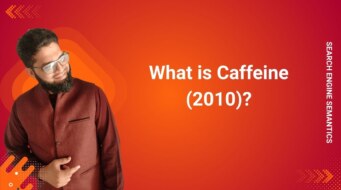What are Alt Tags?
An alt tag is an HTML attribute used to provide a textual description of an image on a webpage. Alt text helps search engines and users understand the image’s content and context.
Two Essential Purposes of Alt Tags:
1. Accessibility:
- Alt text ensures that users who cannot see images—such as those using screen readers or browsing with images disabled—can still understand the content and function of the image.
- This aligns with Web Content Accessibility Guidelines (WCAG), making content more inclusive, especially for individuals with visual impairments.
2. SEO Benefits:
Since search engines cannot “see” images, they rely on alt text to interpret the image’s content.
Properly optimized alt text can:
- Improve Image Indexing – Helps search engines categorize and rank images in Google Images and other search results.
- Enhance On-Page SEO – Provides additional context that reinforces the page’s relevance for target keywords.
- Support Featured Snippets & Rich Results – Well-optimized images with alt text may appear in Google’s rich results, driving more traffic.
- Improve User Experience – If an image fails to load, the alt text appears, ensuring users still get relevant information.
How to Write Effective Alt Text?
1. Be Descriptive & Concise:
Clearly describe what the image shows, while keeping it short and to the point.
2. Include Keywords Naturally:
Use relevant keywords that describe the image’s content, but avoid keyword stuffing.
3. Avoid Generic Phrases:
Don’t use vague descriptions like “image of” or “picture of”. Be specific about what the image represents.
4. Reflect the Image Purpose:
If the image conveys important information (like infographics or product images), ensure the alt text captures its meaning clearly.
Examples of Alt Text in HTML
<img src=”red-apple.jpg” alt=”A fresh red apple on a wooden table”>
Good Alt Text:
A fresh red apple on a wooden table” (Clear, descriptive, and relevant)
Poor Alt Text:
“Apple” (Too vague and does not provide enough context)
When to Use (and Not Use) Alt Tags?
1. Use Alt Text For:
Content-relevant images (e.g., product photos, infographics, charts).
Functional images (e.g., buttons, links, icons).
2. Avoid Alt Text For:
Purely decorative images – Use an empty alt attribute alt=”” for such images to prevent search engines from misinterpreting them.
Background images – These should be handled through CSS rather than HTML and don’t need alt text.
Final Thoughts on Alt Tags
Alt tags are a crucial element of both SEO and web accessibility. By optimizing alt text for images, you not only improve search engine visibility but also ensure all users—including those with disabilities—can engage with your content.
Increased Image Search Traffic: Images with well-optimized alt text have a better chance of appearing in Google Image Search.
Better Ranking: Alt text helps search engines better understand the context of a page, potentially improving page rankings.
Enhanced User Experience: Alt text ensures that users still receive relevant information even if images fail to load.
You can enhance your website’s search visibility, improve accessibility, and create a better user experience for all visitors, by writing clear, descriptive, and keyword-optimized alt text,.
Want to Go Deeper into SEO?
Explore more from my SEO knowledge base:
▪️ SEO & Content Marketing Hub — Learn how content builds authority and visibility
▪️ Search Engine Semantics Hub — A resource on entities, meaning, and search intent
▪️ Join My SEO Academy — Step-by-step guidance for beginners to advanced learners
Whether you’re learning, growing, or scaling, you’ll find everything you need to build real SEO skills.
Feeling stuck with your SEO strategy?
If you’re unclear on next steps, I’m offering a free one-on-one audit session to help and let’s get you moving forward.



